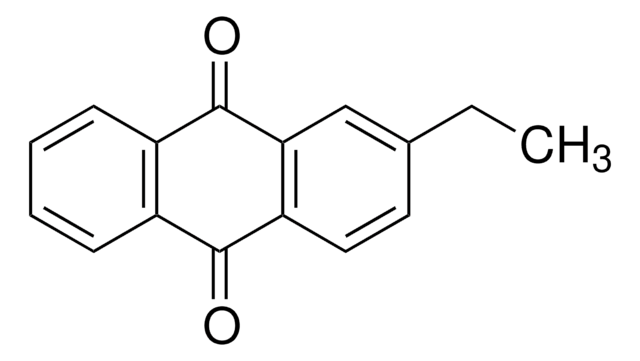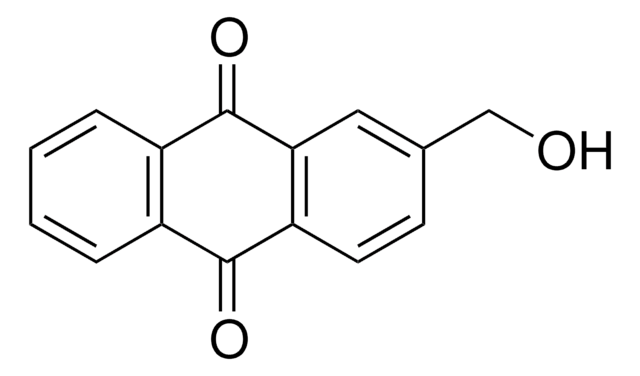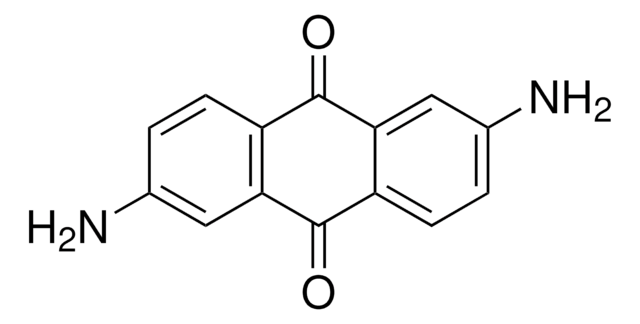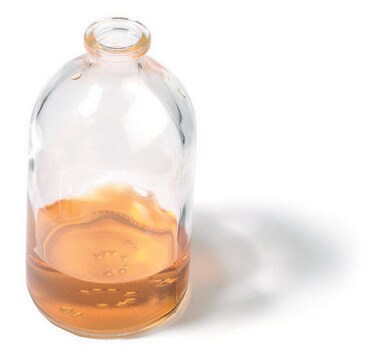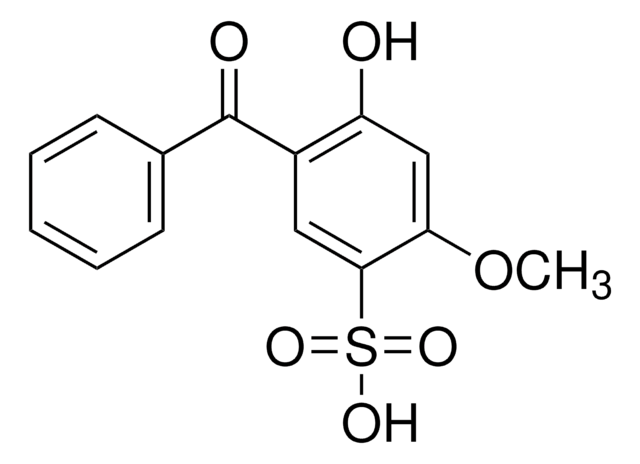65800
2-Methylanthraquinone
technical, ≥95% (HPLC)
Sinónimos:
2-MAQ
About This Item
Productos recomendados
grade
technical
Quality Level
assay
≥95% (HPLC)
impurities
3-4% 1-methylanthraquinone
bp
236-238 °C/10 mmHg (lit.)
mp
170-173 °C (lit.)
functional group
ketone
SMILES string
Cc1ccc2C(=O)c3ccccc3C(=O)c2c1
InChI
1S/C15H10O2/c1-9-6-7-12-13(8-9)15(17)11-5-3-2-4-10(11)14(12)16/h2-8H,1H3
InChI key
NJWGQARXZDRHCD-UHFFFAOYSA-N
Gene Information
human ... CTSG(1511) , ELA2(1991)
¿Está buscando productos similares? Visita Guía de comparación de productos
Application
Storage Class
11 - Combustible Solids
wgk_germany
WGK 3
flash_point_f
408.2 °F - closed cup
flash_point_c
209 °C - closed cup
ppe
Eyeshields, Gloves
Elija entre una de las versiones más recientes:
¿Ya tiene este producto?
Encuentre la documentación para los productos que ha comprado recientemente en la Biblioteca de documentos.
Los clientes también vieron
Nuestro equipo de científicos tiene experiencia en todas las áreas de investigación: Ciencias de la vida, Ciencia de los materiales, Síntesis química, Cromatografía, Analítica y muchas otras.
Póngase en contacto con el Servicio técnico

